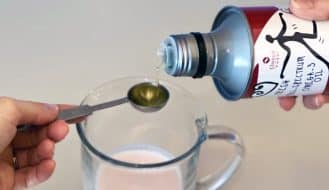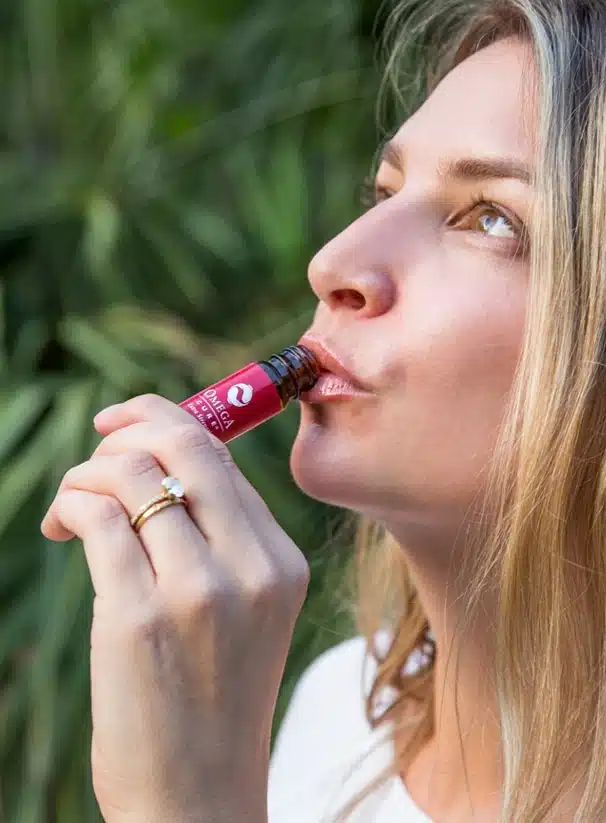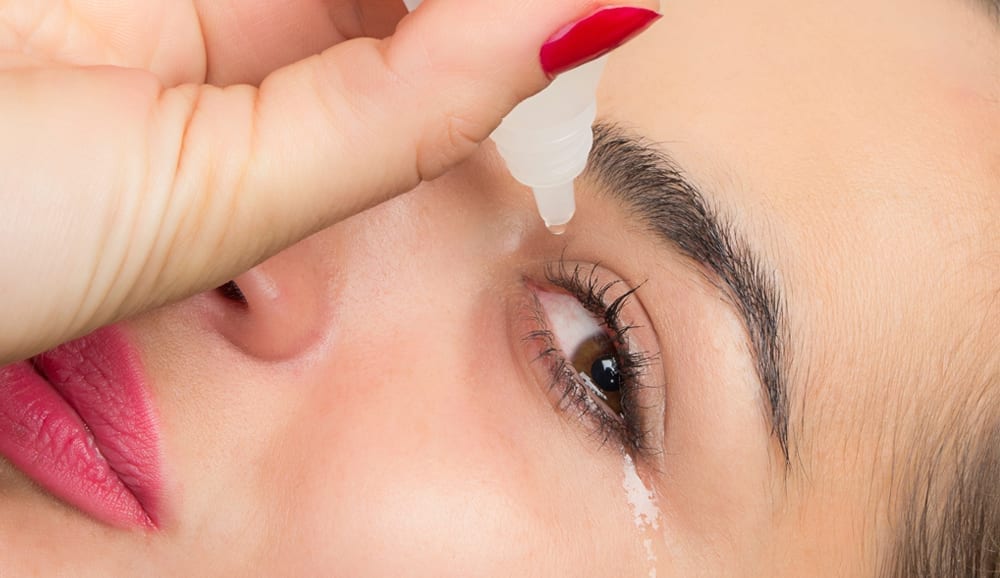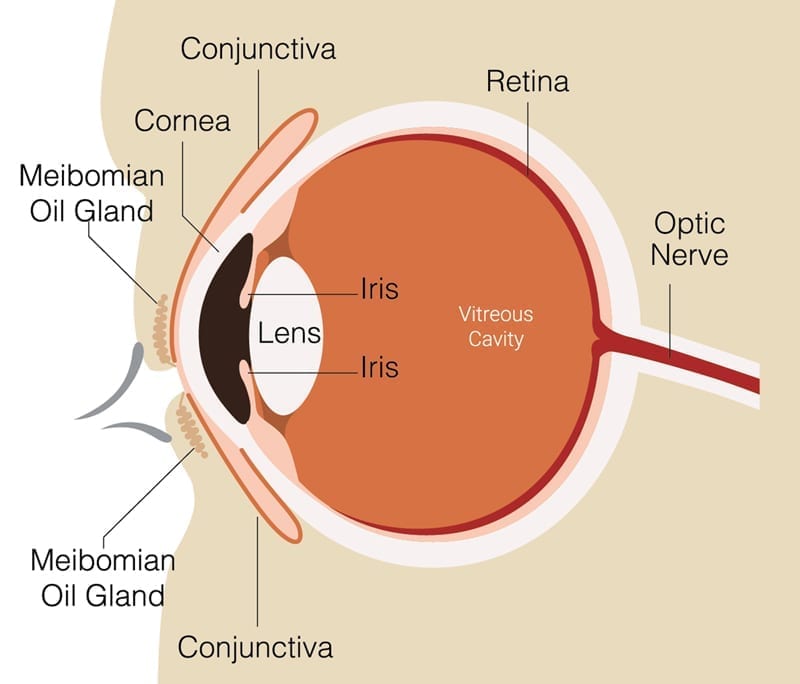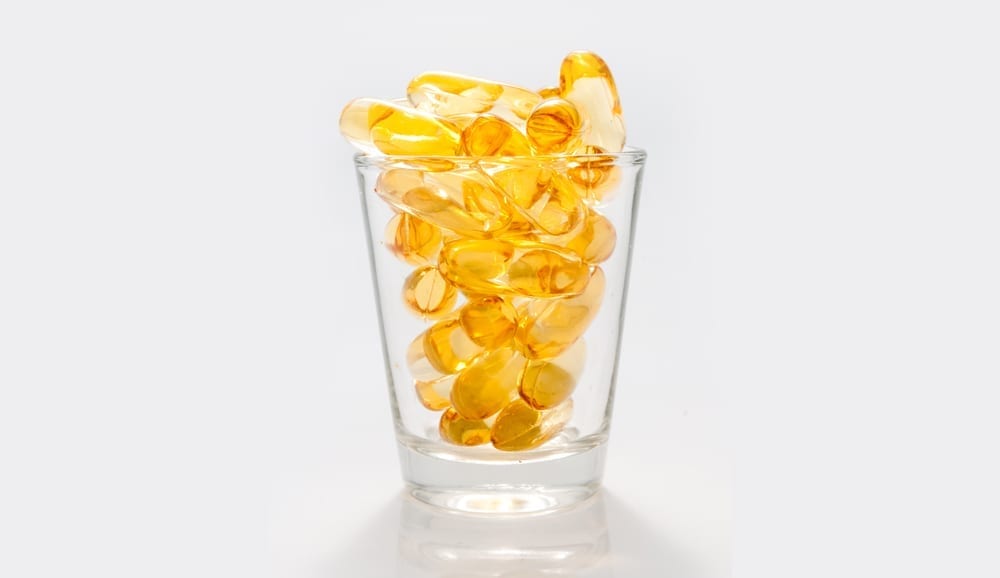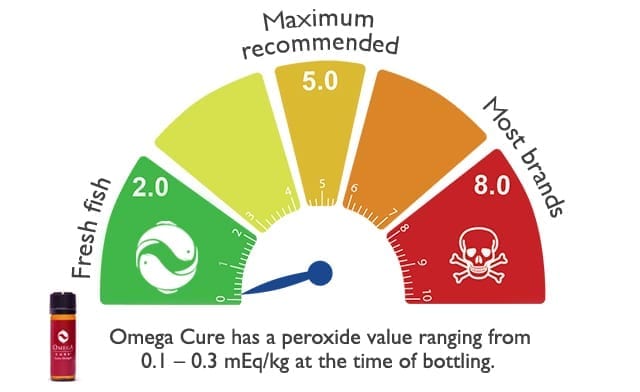5 Tips for Relieving Chronic Dry Eye Symptoms
From saline eye drop solutions to topical lubricants, Americans spend an astounding $3.8 billion on dry eye symptom relief every year (1). Not only are many of these treatments inconvenient and uncomfortable to apply, but often the results are also disappointing.
Current research suggests that chronic inflammation is at the heart of most dry eye issues, including Meibomian Gland Dysfunction (MGD). Since omega-3s from fresh fish and cod liver oil are known to help fight inflammation, can these fatty acids also treat dry eye symptoms?
How Do Dry Eye Symptoms Start?
While a number of environmental and behavioral factors can contribute to dry eyes, the most common cause of dry eye disease is Meibomian Gland Dysfunction.
Located behind the upper and lower eyelids, the meibomian glands are responsible for producing meibum – a rich mixture of oils that keeps the eyes moist and comfortable — every time you blink.
Whether due to chronic inflammation or other factors, the meibomian glands can become clogged, preventing the meibum from lubricating the eyes correctly. Without the meibum, the eye instead has to rely on lower-quality tears that evaporate quickly, leaving the eye surface unprotected. This results in dry eye symptoms (like burning, tearing, redness, and blurry vision).
Over time, clogged meibomian glands can deteriorate, causing MGD. In the early stages, blocked meibomian glands may occur without a person experiencing significant symptoms.
The meibomian glands produce the oily mixture for our tears that keep our eyes moist and comfortable.
Why Are Omega-3s Beneficial for Dry Eyes?
Omega-3 fatty acids serve a number of important roles in the eye. For one, the fatty acids EPA and DHA are known to both prevent and resolve ongoing inflammation (2). Less inflammation can potentially help lower the risk of MGD from developing in the first place; it can also mean less discomfort after the disease has progressed (3).
There’s another purported benefit to omega-3s too. The meibum that the meibomian glands produce is made up of a mixture of wax esters and beneficial fatty acids. Since many people with MGD have an abnormal meibum consistency, it’s believed that increased omega-3 intake can help improve the fatty acid composition and quality of the oil in our tears (4).
To date, clinical studies have found that getting an effective dosage of omega 3 for dry eyes may improve tear production, tear osmolarity, decrease tear evaporation rate, and provide relief for dry eye discomfort (5, 6, 7, 8). We’ll tackle more details on the research below.
5 Steps to Fighting Dry Eyes and MGD with Omega-3s
Many MGD treatments (like eye drops) typically only provide temporary dry eye relief. But increasing your intake of fresh omega-3s may be an effective and relatively inexpensive way to make improvements long term.
If you’re considering taking fish oil or cod liver oil for dry eyes, here are five key points to help ensure success:
1. Get an Effective Omega-3 Dose
For any omega-3 supplement to be effective, getting the right dose of the right fatty acids is crucial. While the studies involving omega-3s and dry eyes have used a variety of doses to achieve results, numerous scientific reviews suggest that omega-3s’ anti-inflammatory effects don’t kick in for adults unless you take more than 2000 mg of EPA/DHA daily (9, 10).
Regular fish oil and cod liver oil supplements often do not provide more than 300 mg of EPA/DHA per capsule, so it’s important to look closely at the supplement facts when choosing an omega-3 product.
For more information on dose and calculating the right serving size, read How Much Omega-3 Fish Oil Per Day Will Deliver Results?
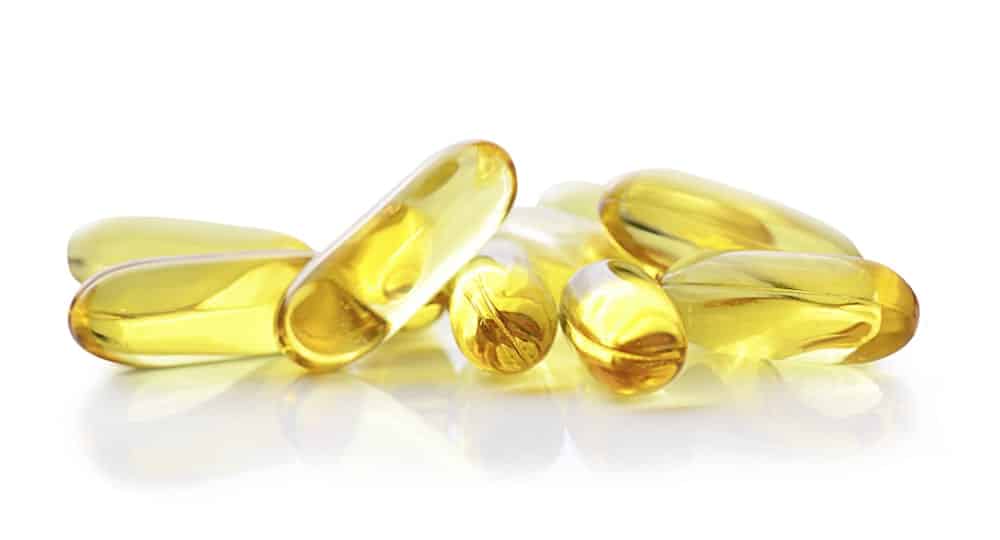
Regular fish oil capsules often contain a deceptively small amount of omega-3s compared to eating fish or drinking liquid cod liver oil.
2. Practice Consistency
Because omega-3s are an important part of the cell’s metabolism, the body needs a regular supply of these fatty acids to combat chronic inflammation. For dry eye sufferers in particular, omega-3 intake is also important for maintaining the tears’ lipid balance.
If you have trouble remembering to take your daily supplement, try taking it with the same meal each day or setting a regular alarm on your phone. The key is sticking with a routine.
3. Give Omega-3 Benefits Time
While increasing your intake of omega-3s can be a wonderful way to improve dry eye symptoms, it takes time for these fatty acids to build up in the body and have an effect. Studies indicate that dry eye relief tends to occur after 6-12 weeks of regular omega-3 supplementation.
Since changes are often gradual and can vary from individual to individual, keeping a journal can be an especially helpful way to monitor your progress.
4. Find a Fresh Fish Oil
While omega-3s are highly beneficial in terms of reducing inflammation, these fatty acids have a molecular structure that makes them extremely prone to oxidation (or spoiling).
Numerous independent studies have found that the majority of omega-3 supplements have turned rancid long before their stated expiration date (11, 12, 13). Not only are oxidized omega-3 products less potent, but consuming rancid fish oil can also be harmful.
If you are taking a liquid product, taste and smell the oil. If it’s fresh, it shouldn’t smell or taste like much. Similarly, if you’re taking fish oil capsules, break one open to taste and smell the contents. If it gives off a bad taste and smell, it’s already oxidized – throw it out!
Truly fresh fish oil should not taste or smell bad, just like fresh fish.
5. When to Take Cod Liver Oil: Morning or Night?
We typically recommend taking your Omega3 Innovations oil in the evening. If your dry eye symptoms typically worsen as the day progresses, you can also try taking a small amount of oil in the morning with breakfast.
Clinical Studies on Dry Eyes and Omega-3 Supplements
The question of how omega-3s impact dry eyes and MGD has attracted a lot of interest in the scientific community for the last 10 years. While many clinical trials have found that omega-3 supplementation has a beneficial effect, the research is sometimes conflicting. For instance, in 2018, a NIH-funded study called the DREAM trial surprisingly found that a high dose of omega-3s did not make a significant difference in terms of relieving dry eye symptoms compared to placebo (14).
Just this past May 2019, however, two large meta-analyses — one involving 1782 patients with dry eyes, and the other involving 3363 patients — re-examined the data. In both, the scientists concluded that omega-3 supplementation did improve dry eye symptoms and metrics, including tear breakup time, Schirmer test scores, tear osmolarity, and ocular surface disease index scores (15, 16).
At Omega3 Innovations, we have also done our own pilot study on omega-3s and dry eyes. In 2015, working with an ophthalmology clinic, we found that 70% of users who took Omega Cure® Extra Strength (3000 mg EPA/DHA) once a day experienced relief from the symptoms of chronic dry eyes.
Omega Cure Extra Strength has extremely low oxidation levels compared to other fish oils and cod liver oils — hence the absence of any fishy taste.
Omega3 Innovations Fish Oil for Dry Eye Relief
Dry eyes can be an uncomfortable disease to manage, but getting the right kinds of omega-3s does not have to be painful.
Omega Cure Extra Strength makes it easy to get an effective omega-3 dose in a single, easy-to-swallow serving of oil. With no fishy flavor or smell, the oil can be mixed into juice, yogurt, or smoothies — or taken straight.
To hear from users who have taken Omega Cure for dry eyes, you can learn more here:
An Effective Omega-3 Dose, Made Simple
Experience the Omega3 Innovations difference for yourself with the most effective fish oil supplement on the market.
Buy Now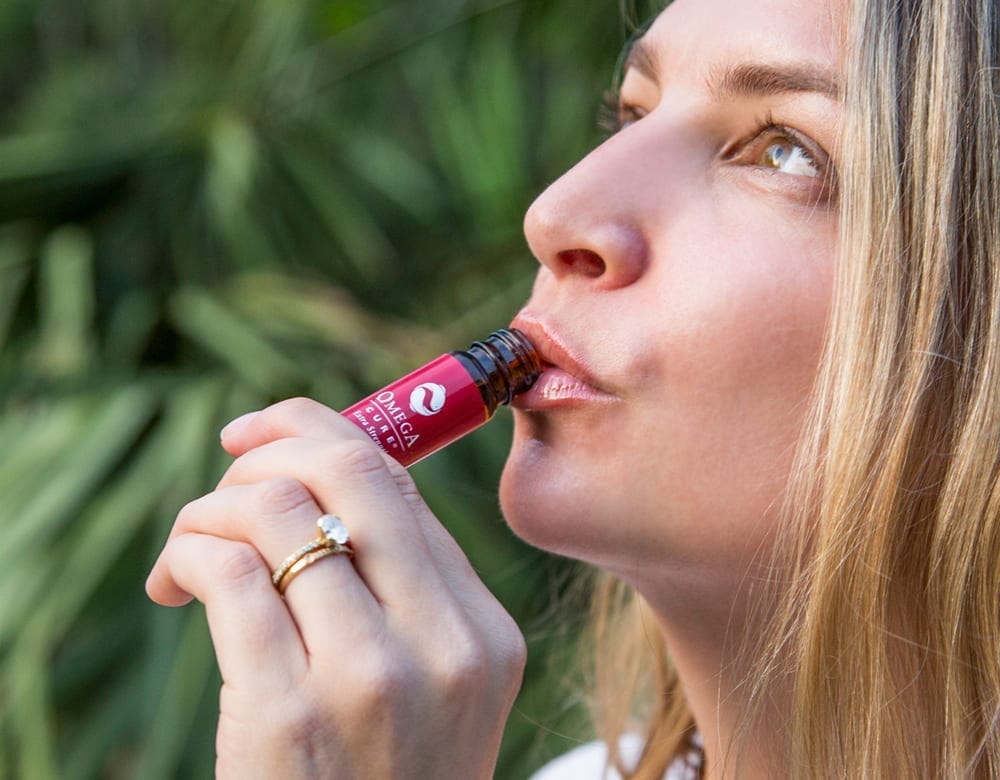
References:
1. Yu, J., Asche, C.V. & Fairchild, C.J. (2011). The Economic Burden of Dry Eye Disease in the United States: A Decision Tree Analysis. Cornea, 30(4):379-87.
2. Molfino, A., Amabile, M. I., Monti, M., & Muscaritoli, M. (2017). Omega-3 Polyunsaturated Fatty Acids in Critical Illness: Anti-Inflammatory, Proresolving, or Both? Oxidative Medicine and Cellular Longevity, 5987082.
3. Baudouin, C., Messmer, E.M., Aragona, P., et al. (2016). Revisiting the Vicious Circle of Dry Eye Disease: A Focus on the Pathophysiology of Meibomian Gland Dysfunction. British Journal of Ophthalmology, 100: 300-306.
4. Qiao, J., & Yan, X. (2013). Emerging Treatment Options for Meibomian Gland Dysfunction. Clinical Ophthalmology (Auckland, N.Z.), 7, 1797–1803.
5. Deinema, L.A. et al. (2017). A Randomized, Double-Masked, Placebo-Controlled Clinical Trial of Two Forms of Omega-3 Supplements for Treating Dry Eye Disease. Ophthalmology, 124(1):43-52.
6. Mohammadpour, M., Mehrabi, S., Hassanpoor, N., & Mirshahi, R. (2016). Effects of Adjuvant Omega-3 Fatty Acid Supplementation on Dry Eye Syndrome Following Cataract Surgery: A Randomized Clinical Trial. Journal of Current Ophthalmology, 29(1), 33–38.
7. Bhargava, R., Kumar, P., Kumar, M., Mehra, N., & Mishra, A. (2013). A Randomized Controlled Trial of Omega-3 Fatty Acids in Dry Eye Syndrome. International Journal of Ophthalmology, 6(6), 811–816.
8. Oleñik A. (2014). Effectiveness and Tolerability of Dietary Supplementation with a Combination of Omega-3 Polyunsaturated Fatty acids and Antioxidants in the Treatment of Dry Eye Symptoms: Results of a Prospective Study. Clinical Ophthalmology (Auckland, N.Z.), 8, 169–176.
9. Calder P. C. (2013). Omega-3 Polyunsaturated Fatty acids and Inflammatory Processes: Nutrition or Pharmacology? British Journal of Clinical Pharmacology, 75(3), 645–662.
10. Fabian, C. J. & Kimler, B.F. (2018). The Conundrum of Omega-3 Fatty Acids in Cancer Prevention Studies: Which One? How Much? What Biomarkers? Cancer Prevention Research, 11(4):187-190.
11. Jackowski, S. A., Alvi, A. Z., Mirajkar, A., Imani, Z., Gamalevych, Y., Shaikh, N. A., & Jackowski, G. (2015). Oxidation Levels of North American Over-the-Counter N-3 (Omega-3) Supplements and the Influence of Supplement Formulation and Delivery Form on Evaluating Oxidative Safety. Journal of Nutritional Science, 4, e30.
12. Mason, R.P. & Sherratt, S.C.R. (2017). Omega-3 Fatty Acid Fish Oil Dietary Supplements Contain Saturated Fats and Oxidized Lipids that May Interfere with Their Intended Biological Benefits. Biochemical and Biophysical Research Communications, 483(1):425-429.
13. Cameron-Smith, D., Albert, B. B., & Cutfield, W. S. (2015). Fishing for Answers: Is Oxidation of Fish Oil Supplements a Problem? Journal of Nutritional Science, 4, e36.
14. Dry Eye Assessment and Management Study Research Group, Asbell, P. A., Maguire, M. G., Pistilli, M., Ying, G. S., Szczotka-Flynn, L. B., … Shtein, R. M. (2018). N-3 Fatty Acid Supplementation for the Treatment of Dry Eye Disease. The New England Journal of Medicine, 378(18), 1681–1690.
15. Chi, S. C., Tuan, H. I., & Kang, Y. N. (2019). Effects of Polyunsaturated Fatty Acids on Nonspecific Typical Dry Eye Disease: A Systematic Review and Meta-Analysis of Randomized Clinical Trials. Nutrients, 11(5), 942.
16. Giannaccare, G. et al. (2019). Efficacy of Omega-3 Fatty Acid Supplementation for Treatment of Dry Eye Disease: A Meta-Analysis of Randomized Clinical Trials. Cornea, 38(5): 565-573.
Popular posts
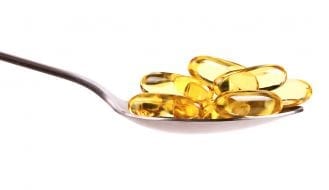


Related posts


